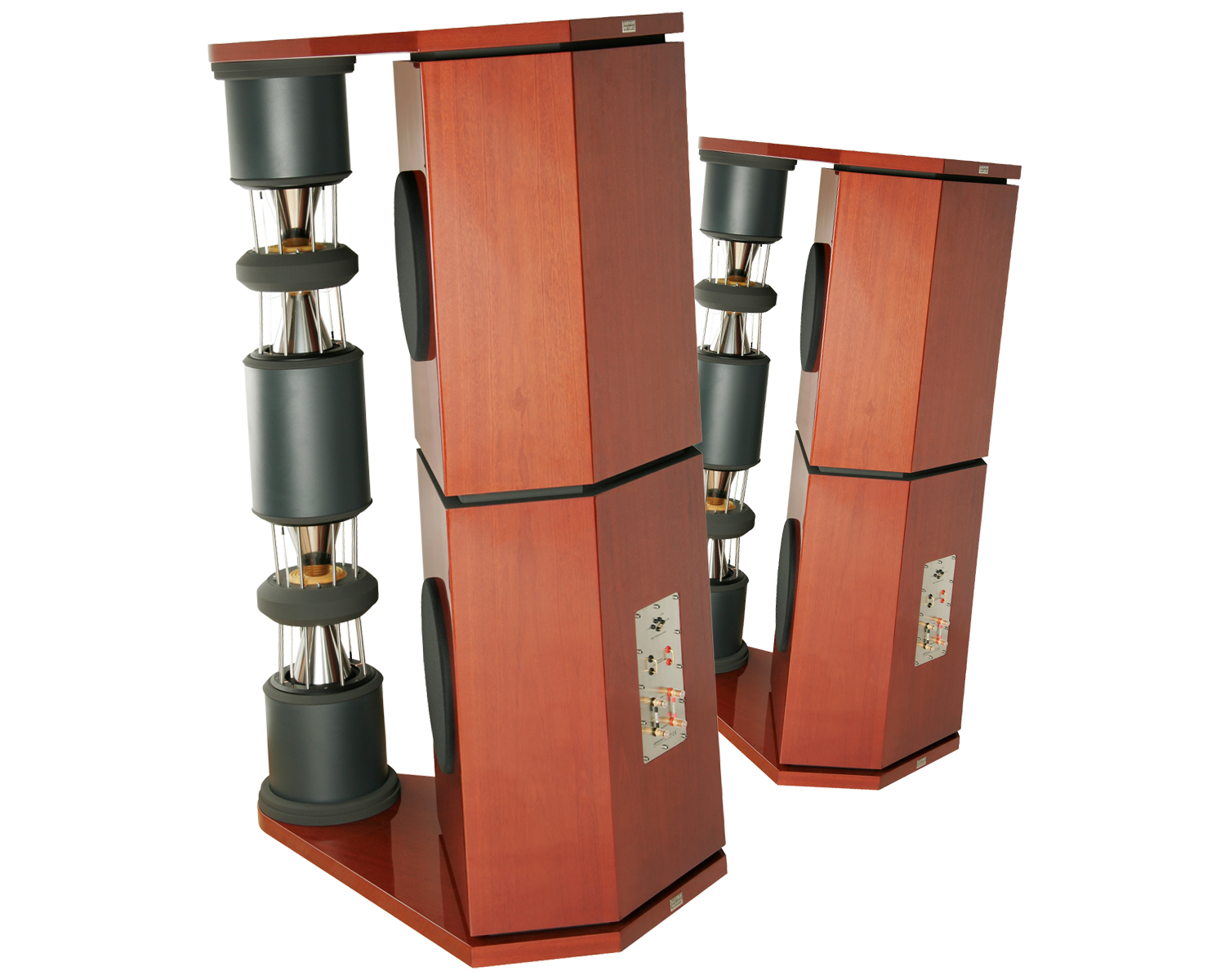Boxe German Physiks Loreley Mk III
Contacteaza-ne pentru pret
Livrare GRATUITA la comenzi de peste 300 de lei
Boxe German Physiks Loreley Mk III
Boxe German Physiks Loreley Mk III
Boxe German Physiks Loreley Mk III
Overview
The Loreley MK III is designed to bring you closer to the “concert experience” that our flagship Gaudi provides, but in a smaller cabinet and at a lower price. Like the Gaudi, the Loreley MK III is capable of reproducing sound levels up to 120dB, which allows live music dynamics to be more realistically reproduced. At the same time it can accurately reproduce the low-level detail and delicate nuances that are the essence of a musical performance.

The Loreley MK III uses four DDD drivers, two 12-inch woofers and four 10-inch passive radiators to produce a truly emotionally involving musical performance.
The Loreley MK III is designed to be bi-amped using an active crossover. This means that it uses two power amplifiers to directly drive each loudspeaker: one for the DDD drivers and one for the woofers. The signal split for each section is performed at low level using the new German Physiks Extreme digital active crossover, which is supplied with the Loreley. This is pre-configured at the factory so all the customer has to do is connect it into the system and switch it on. The customer may if they wish manually adjust the crossover’s settings. A number of set-up memories are provided to allow customer set-ups to be stored and then recalled when required.
Active operation provides a much higher level of performance than is possible with a passive crossover and allows the full potential of this high quality design to be realised.
Independent Bass Enclosures
Each loudspeaker has two large independent bass enclosures mounted one on top of the other, which stand between a top and a bottom plate. None of these components is attached to the other using screws or any form of hard connection, but are held together by an interlocking collar arrangement. This greatly reduces resonances and also makes the column more difficult to topple. Each enclosure is fitted with a 12-inch inverted dome driver that has a maximum excursion of 3 inches. Distortion levels are typically a tenth of those of conventional 18-inch sub woofers at comparable output levels. In addition, their acceleration and transient responses are far superior due to the immense magnetic forces generated by the massive rare earth magnets we use and to the very high stiffness of the dome diaphragms. The net result is a system with a very extended and very clean low frequency response, that is also capable of prodigious output levels, exceeding 110dB at 18Hz.

Freedom from Power Compression
Power compression, the reduction in dynamic range caused by heating of the voice coil, is much reduced over conventional woofer drivers due to the ultra-wide, under-hung voice coil and triple magnet structure we employ. Power handling is also correspondingly greatly increased over that of conventional designs.

The heart of all German Physiks loudspeakers is the unique omnidirectional DDD driver
The German Physiks DDD driver uses a cone made of extremely thin (0.15mm) carbon fibre. This is very light, but also very rigid. Each driver is hand-built by a skilled technician in our factory in Germany. This is a painstaking process that takes 6 hours. After assembly, each driver undergoes a series of rigorous tests. It is then subject to a 96 hour pre-aging process, playing specially selected music at high level. Finally, it is retested and put together with another driver to form a matched pair.
The DDD driver has two key distinguishing features
1. It is omnidirectional, meaning that it radiates the sound evenly around it.
2. It has an exceptionally wide operating range. In the Unlimited it covers the range from 200Hz up to 24kHz – almost 7 octaves.
This extremely wide range is achieved by the use of 3 modes of radiation
Pistonic radiation
Bending wave radiation
Modal radiation
By comparison, most loudspeakers use drivers that only use pistonic radiation. These have a much narrower operating range and as the frequency rises, they tend to concentrate their energy into a progressively narrowing beam. This is explained in more detail here.
Full info & available colors
| Weight | 420 kg |
|---|---|
| Dimensions | 700 × 1000 × 1800 mm |
| Specificatii | Impedance Frequency response Power handling Amplification required Crossover frequency Crossover slopes Sensitivity Maximum output level Input connectors Drivers Finish options Warranty |














